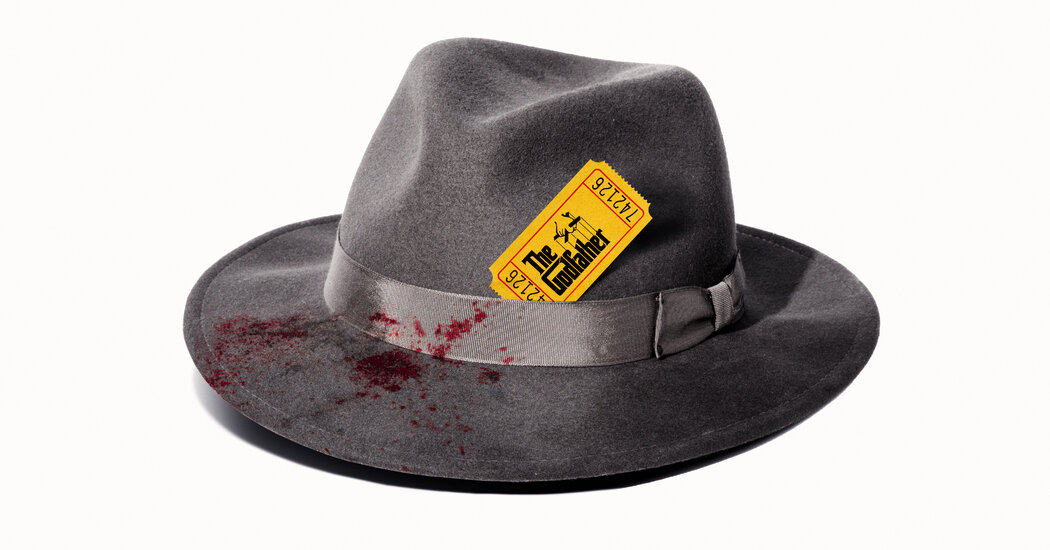Five articles from around The Times, narrated just for you.
This weekend, listen to a collection of narrated articles from around The New York Times, read aloud by the reporters who wrote them.
With ‘The Godfather,’ Art Imitated Mafia Life. And Vice Versa.
Written and narrated by Michael Wilson
With ‘The Godfather,’ Art Imitated Mafia Life. And Vice Versa.
Mario Puzo, who wrote “The Godfather,” has said that the novel’s keenly observed depictions came from his meticulous research. But since the movie premiered half a century ago, this prime example of art imitating Mafia life has gone on to work in the other direction, too. Generations of mobsters have looked to “The Godfather” for inspiration, validation and as a playbook for how to speak and act and dress, as seen in law enforcement wiretaps and through interviews with some of the players themselves.
The infamous former mob enforcer Salvatore (Sammy the Bull) Gravano, who has admitted to participating in 19 murders, was a young man just entering the world of mobsters when he first saw the film, and he took it as a sign that he was on the right path. “I looked up to them,” he recalled in a telephone interview, “even more than I ever did.”
◆ ◆ ◆
How the ‘Encanto’ Soundtrack Became a Smash
Written and narrated by Ben Sisario
How the ‘Encanto’ Soundtrack Became a Smash
The soundtrack to Disney’s “Encanto” had an inauspicious start on the Billboard 200 album chart, arriving at No. 197 after the animated film’s release in November, just below Bob Seger’s “Greatest Hits” and a Notorious B.I.G. reissue.
But this week the soundtrack, featuring songs by Lin-Manuel Miranda and a score by Germaine Franco, notches its eighth week at No. 1 — one of only three albums with a run this long in the last five years — while Miranda’s song “We Don’t Talk About Bruno” slipped to second place on the Hot 100 singles chart after five times at the top.
What happened in between is an object lesson in how songs become hits now, with tracks elevated by fans through streaming and social media, and radio often lagging behind the curve.
◆ ◆ ◆
Brittney Griner’s Impact Is Clear as W.N.B.A. Fans Await Word From Russia
Written by Alanis Thames and Jonathan Abrams | Narrated by Jonathan Abrams
Brittney Griner’s Impact Is Clear as W.N.B.A. Fans Await Word From Russia
When Brittney Griner is on the basketball court, everyone knows. At 6-foot-9, she towers over most other players. She snatches rebounds over her opponents’ outstretched arms, and her teammates know the surest way to score: Deliver the ball to her.
Since the Phoenix Mercury drafted Griner No. 1 overall in 2013, she has become one of the most dominant players ever: a seven-time All-Star, a W.N.B.A. champion and a two-time Olympian with matching gold medals.
But now Griner, 31, has become entangled in a geopolitical quandary. Instead of preparing for the W.N.B.A. season that’s less than two months away, she is believed to be detained in Russia on what customs officials described as drug charges, with little word on her case or her well-being during the war in Ukraine.
◆ ◆ ◆
Most Women Denied Abortions by Texas Law Got Them Another Way
Written by Margot Sanger-Katz, Claire Cain Miller and Quoctrung Bui | Narrated by Margot Sanger-Katz
Most Women Denied Abortions by Texas Law Got Them Another Way
In the months after Texas banned all but the earliest abortions in September, the number of legal abortions in the state fell by about half. But two new studies suggest the total number among Texas women fell by far less — around 10 percent — because of large increases in the number of Texans who traveled to a clinic in a nearby state or ordered abortion pills online.
Two groups of researchers at the University of Texas at Austin counted the number of women using these alternative options. They found that while the Texas law — which prohibits abortion after fetal cardiac activity can be detected, or around six weeks — lowered the number of abortions, it did so much more modestly than earlier measurements suggested.
But for the architects of the Texas law, even a modest reduction in abortions is a success.
◆ ◆ ◆
Again and Again, Literature Provides an Outlet for the Upended Lives of Refugees
Written and narrated by Dwight Garner
Again and Again, Literature Provides an Outlet for the Upended Lives of Refugees
Writers have often sought to capture the experience of the outsider, the exile, the parched traveler, the wanderer, the migrant. Ovid wrote the letters in his “Tristia” (“Sorrows”) after his banishment from Rome. In “Crime and Punishment,” a desperate man asks, “Do you understand what it means when you have absolutely nowhere to turn?” I am not here to suggest that reading necessarily makes us better, more moral. The Nazis liked Dostoyevsky, too. But Joyce Carol Oates was surely correct when she wrote, “Reading is the sole means by which we slip, involuntarily, often helplessly, into another’s skin, another’s voice, another’s soul.”
The unrelentingly grim news from Ukraine is a reminder of how much of literature is fueled by crises of migration and its aftermaths, and how writers have tried to capture the texture of upended lives.
Want to hear more narrated articles from publications like The New York Times? Download Audm for iPhone and Android.
The Times’s narrated articles are made by Tally Abecassis, Parin Behrooz, Anna Diamond, Sarah Diamond, Jack D’Isidoro, Aaron Esposito, Dan Farrell, Elena Hecht, Adrienne Hurst, Elisheba Ittoop, Emma Kehlbeck, Marion Lozano, Tanya Pérez, Krish Seenivasan, Margaret H. Willison, Kate Winslett, John Woo and Tiana Young. Special thanks to Sam Dolnick, Ryan Wegner, Julia Simon and Desiree Ibekwe.


























